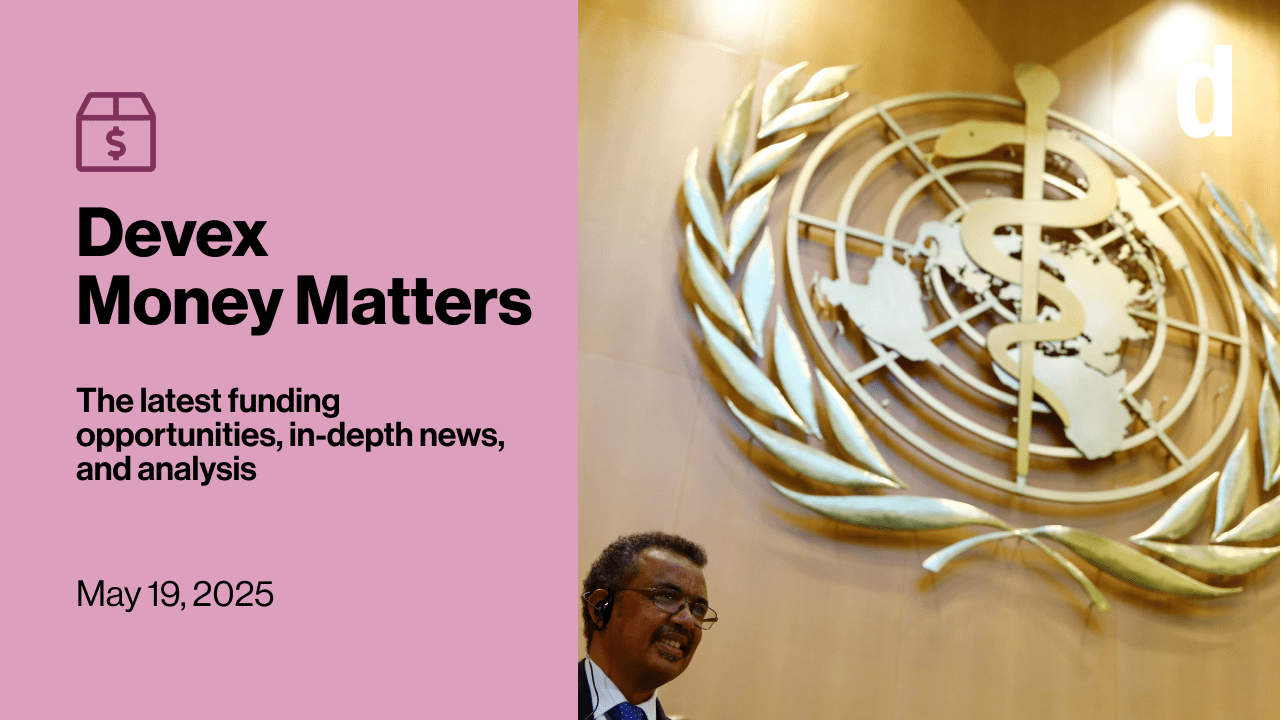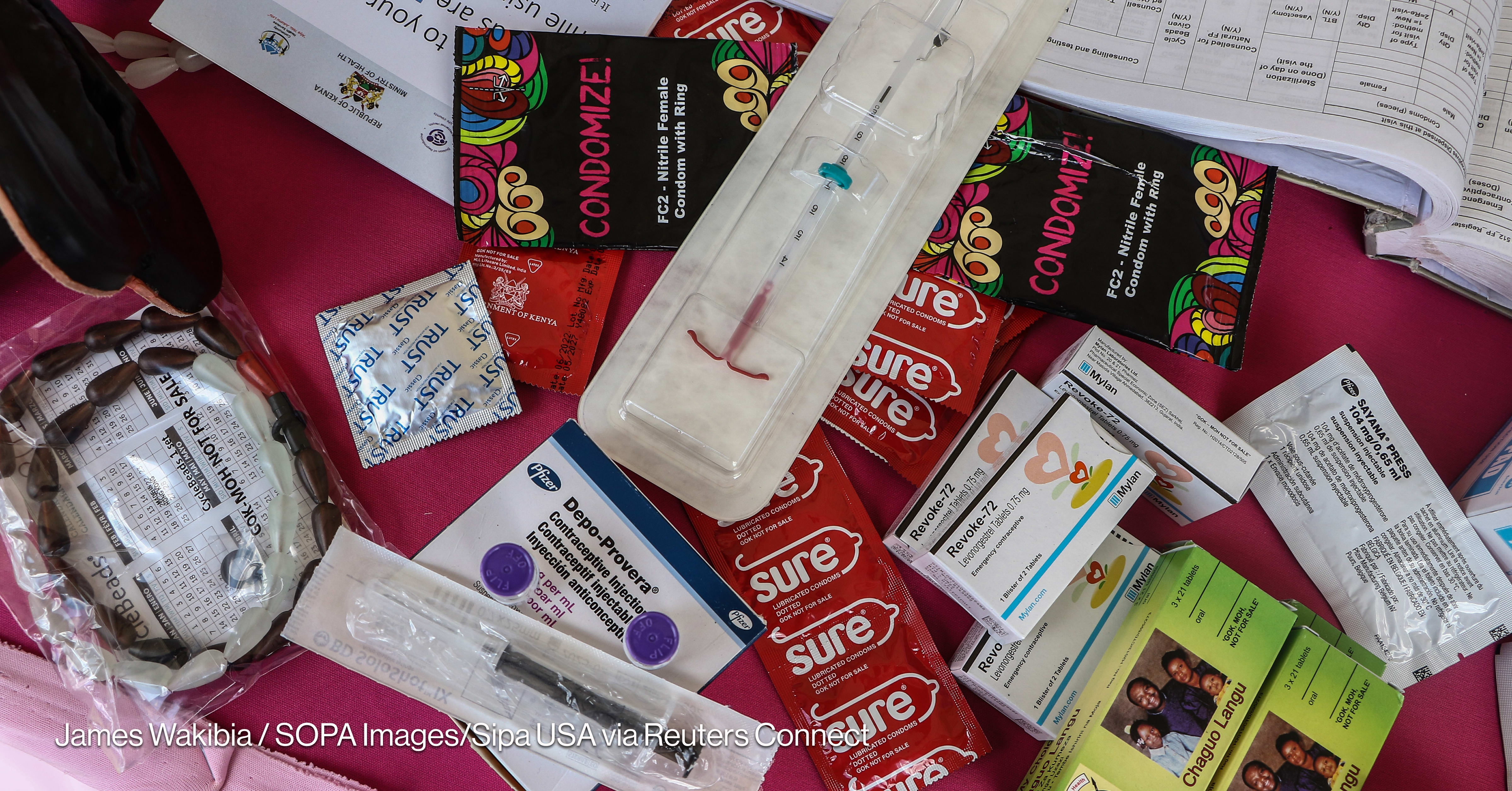UNFPA support: Where is the money going and coming from?
Last week, UNFPA launched a transparency portal that shows information about its operations in 2014. We dig into the data and take a closer look at which donors contributed the most to the U.N. agency and how it used its funds last year.
Last week, the United Nations Population Fund launched a transparency portal that shows important information about how the U.N. agency spent contributions from its donors in 2014. While UNFPA — which is not funded by the U.N. regular budget and is instead supported by donor governments, intergovernmental organizations, private sector groups and foundations and individual donors — has long made financial data about its operations available to the public, the transparency portal was the first effort to present income and expenditure figures in a way that is “easily viewed and digestible,” Hanno Ranck, UNFPA’s online communications manager, told Devex. According to Ranck, the launch of the tool was also meant to coincide with UNFPA’s strategic plan for 2014-17, which lays out the direction the U.N. agency plans to take in the next few years. A cursory look at the 2014 data shows some general insights: UNFPA ($561 million) remained the largest implementing agency of its projects, with nongovernmental organizations ($131.9 million) and governments ($123 million) trailing at a far second and third. Most of the UNFPA money was spent on integrated sexual and reproductive health services ($500 million), with family planning ($211.1 million) claiming the biggest chunk of this sector. Below, we dig deeper into UNFPA data and look at which donors contributed the most to the agency and how it used its funds last year. Noncore contributions dwarfed core contributions While UNFPA has historically received the bulk of its funds from what it calls “regular resources” — or core contributions that are not earmarked for a specific purpose — noncore contributions have increased and even exceeded core contributions in recent years. In 2014, core contributions comprised $339.2 million of UNFPA’s resources, while noncore contributions reached $479.9 million, representing 59 percent of agency funding. Among UNFPA’s top 20 donors, noncore contributions ($485.3 million) also slightly surpassed core contributions ($466.8 million). According to Ranck, UNFPA spends core contributions using a resource allocation and distribution system that considers the total need of each country and plans an initial amount according to the country’s level of need for agency support. Once the UNFPA executive board approves the country program documents, the final figures for countries are set. But if UNFPA could learn from the experience of other U.N. agencies that have seen a similar shift toward noncore contributions, then earmarked resources would determine its funding pattern in the coming years — a “change [that] has important implications for the management of both [its] human and financial resources,” according to its 2014-17 strategic plan. For instance, using historical trends, information from donors and scenario modeling, the U.N. agency expects to receive $4.56 billion from 2014 to 2017. This amount will primarily come from rising noncore contributions, according to UNFPA’s forecast. Countries that need the most UNFPA support are concentrated in Africa UNFPA assesses the level of need of countries and territories through the resources available to them as well as six indicators: the proportion of births attended by skilled health personnel for the poorest quintile of the population, the maternal mortality ratio, the adolescent birth rate, the proportion of demand for modern contraception satisfied, HIV prevalence among ages 15 to 24, and ranking on a gender inequality index. It’s no surprise that countries marked as having either “high” or the “highest” levels of need for UNFPA support mostly come from Africa, which continues to account for the majority of maternal deaths. According to a report using maternal mortality estimates from the World Health Organization, UNICEF, UNFPA, the World Bank and the U.N. Population Division, while maternal deaths declined 45 percent from 1990 to 2013, sub-Saharan Africa, which recorded 62 percent of maternal deaths in 2013, remains the riskiest region for deaths related to pregnancy and childbirth complications. Only two countries outside Africa have the “highest” label: Afghanistan and Haiti. In both countries, women often have to give birth at home because they lack the means to travel to the nearest clinics. Poor roads and, in the case of Afghanistan, punishing winters also increase the likeliness of women opting to stay at home and miss crucial health checkups during their pregnancy. Meanwhile, Sierra Leone and Honduras, which are among the top 20 donors to UNFPA and have “highest” and “high” levels of need for UNFPA assistance, respectively, seem to link their contributions — both completely earmarked — with their high sexual and reproductive health burden. Program expenses in Africa point to slightly different priorities Last year, UNFPA spent $183.2 million on East and Southern Africa and $158.1 million on West and Central Africa. A more detailed breakdown of program expenses shows that while integrated sexual and reproductive health services dominated UNFPA operations in both regions, the focus for each was slightly different. In East and Southern Africa, where 32 percent of the population is between the ages of 10 and 24 and where the need for family planning remains largely unmet, maternal health ($44 million) emerged as the primary sector of UNFPA support. Zimbabwe ($21.1 million), Uganda ($20.7 million) and South Sudan ($19.1 million) were the three top recipients in the region. Meanwhile, family planning ($44.2 million) was the main focus of UNFPA assistance in West and Central Africa, where more than 120,000 out of 800,000 women would be at risk of death from pregnancy- and childbirth-related complications if the necessary emergency obstetric care are not available, according to October 2014 estimates from UNFPA. Nigeria ($32.1 million), Niger ($13.6 million) and Sierra Leone ($10.7 million) were the three largest recipients. Interestingly, the top subsectors for East and Southern Africa and West and Central Africa did not correspond to the biggest burdens of these two regions. While family planning ($35.8 million) made up a significant portion of program expenses in East and Southern Africa, it came second to maternal health in 2014. The same applies to West and Central Africa: Despite the looming threat of maternal deaths, maternal health ($33.8 million) was behind family planning in UNFPA’s programs in the region. To read additional content on global health, go to Focus On: Global Health in partnership with Johnson & Johnson.
Last week, the United Nations Population Fund launched a transparency portal that shows important information about how the U.N. agency spent contributions from its donors in 2014.
While UNFPA — which is not funded by the U.N. regular budget and is instead supported by donor governments, intergovernmental organizations, private sector groups and foundations and individual donors — has long made financial data about its operations available to the public, the transparency portal was the first effort to present income and expenditure figures in a way that is “easily viewed and digestible,” Hanno Ranck, UNFPA’s online communications manager, told Devex.
According to Ranck, the launch of the tool was also meant to coincide with UNFPA’s strategic plan for 2014-17, which lays out the direction the U.N. agency plans to take in the next few years.
This story is forDevex Promembers
Unlock this story now with a 15-day free trial of Devex Pro.
With a Devex Pro subscription you'll get access to deeper analysis and exclusive insights from our reporters and analysts.
Start my free trialRequest a group subscription Printing articles to share with others is a breach of our terms and conditions and copyright policy. Please use the sharing options on the left side of the article. Devex Pro members may share up to 10 articles per month using the Pro share tool ( ).
Anna Patricia Valerio is a former Manila-based development analyst who focused on writing innovative, in-the-know content for senior executives in the international development community. Before joining Devex, Patricia wrote and edited business, technology and health stories for BusinessWorld, a Manila-based business newspaper.








